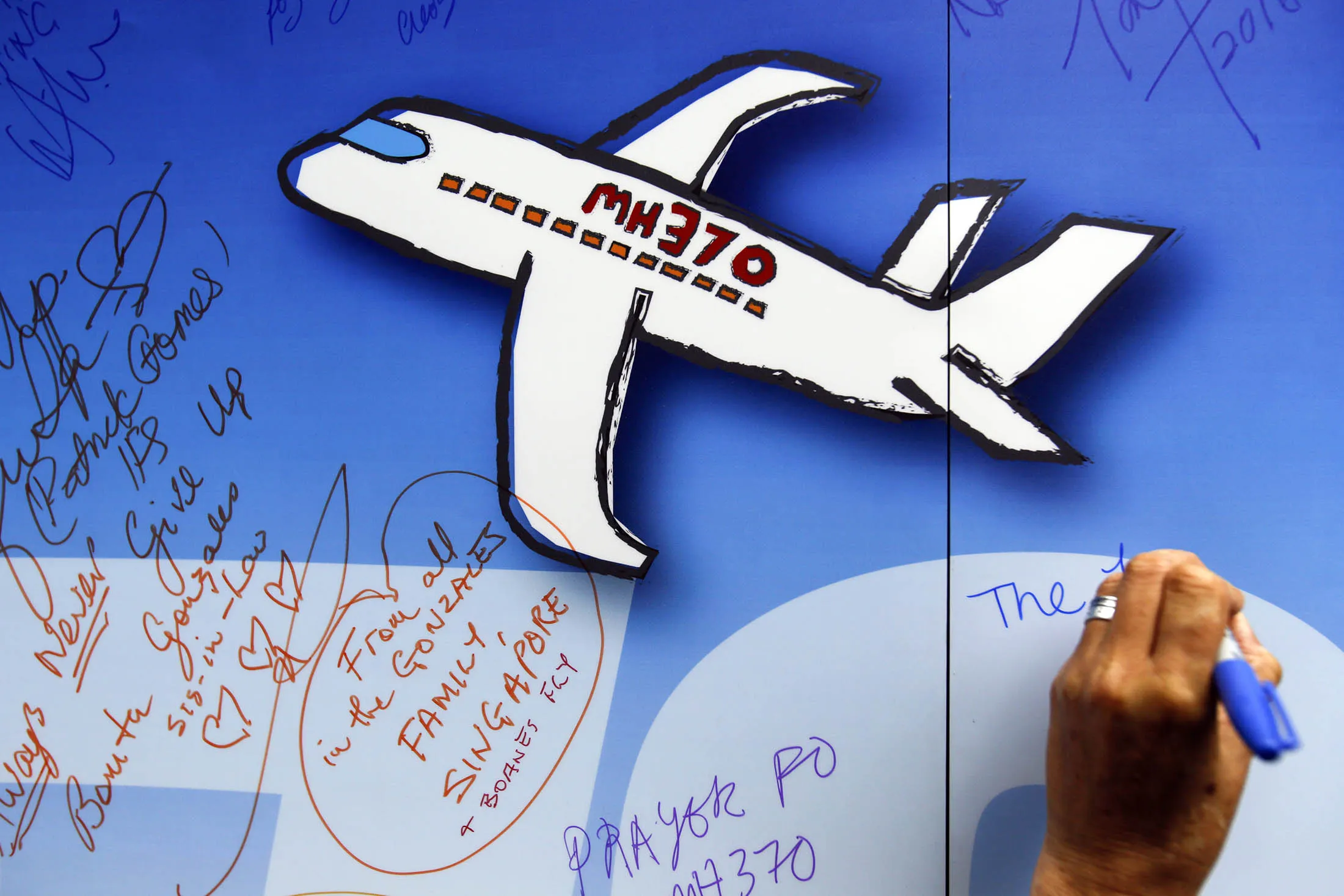The disappearance of Malaysian Airlines Flight MH370 remains one of the most perplexing aviation mysteries of all time. On March 8, 2014, a Boeing 777-200ER carrying 239 people vanished without a trace during a routine flight from Kuala Lumpur to Beijing. Despite extensive searches and investigations, the aircraft, its passengers, and crew have never been found, leaving behind a trail of heartbreak, theories, and unanswered questions.
The Flight’s Final Moments

Flight MH370 took off from Kuala Lumpur International Airport at 12:42 AM local time, with a scheduled arrival in Beijing at 6:30 AM. The aircraft was in perfect condition, and the pilots were experienced: Captain Zahari Ahmad Shah had over 18,000 flight hours, while First Officer Fariq Abdul Hamid was on his final training flight before becoming fully certified.
Everything seemed normal until 1:19 AM, when the last communication from the cockpit was made: “Good night, Malaysia 370.” Just one minute later, the plane vanished from civilian radar, and contact was lost. The transponder, which helps track aircraft, stopped transmitting, and the plane seemed to disappear into thin air.
The Search Efforts
The search for MH370 quickly became the most expensive and complex in aviation history. Authorities launched a massive operation, but the initial search yielded no results. Military radar, however, continued to track the plane for another hour, revealing that it had made a sudden right turn and then a sharp left, heading southwest back toward Malaysia. This unexpected maneuver suggested that someone or something had taken control of the aircraft.
By 7:20 AM, it was clear that something had gone horribly wrong. The plane was presumed to have crashed into the Indian Ocean, but without the main wreckage, no one could say for sure what had happened. Theories began to emerge, ranging from deliberate pilot action to mechanical failure or even hijacking.
The Discovery of Debris

In the years following the disappearance, pieces of debris believed to be from MH370 began washing up on beaches in the Indian Ocean. The first confirmed piece, a right flaperon, was found on Reunion Island in July 2015. Subsequent discoveries included parts of the right stabilizer and right wing, which were traced back to a crash site in the southern Indian Ocean.
Despite these findings, many questions remain. Why were there not more parts found? Why did the debris not scatter like in other crashes? Some experts believe the plane may have entered the water almost vertically, which could explain the limited amount of wreckage.
Renewed Search Efforts
As the 10th anniversary of MH370’s disappearance approached in 2024, the Malaysian government announced plans for a renewed search. Ocean Infinity, a company specializing in deep-sea exploration, was set to return to the southern Indian Ocean with advanced technology and a new search plan. The search area was carefully chosen based on satellite data, weather patterns, and debris that had washed ashore.
The families of the passengers and crew have never given up hope for answers. They have fought tirelessly for information and have even conducted their own searches along the coast of Madagascar, recovering several pieces of debris believed to be from the missing plane.
The Impact on Aviation

The disappearance of MH370 has had a profound impact on the aviation industry. It forced airlines and governments worldwide to rethink how planes are tracked and how search missions are conducted. In the wake of the incident, many airlines have implemented real-time tracking systems using satellites, making it harder for a plane to go missing without a trace. Flight data recorders, or black boxes, have also been upgraded to ensure longer-lasting signals and more detailed flight information.
Conclusion: The Mystery Continues
The mystery of Malaysian Airlines Flight MH370 remains unsolved, and the world continues to seek answers. As new search efforts are launched and technology advances, there is hope that the truth behind this tragic disappearance may finally be uncovered. The legacy of MH370 serves as a reminder of the importance of aviation safety and the need for continued vigilance in tracking and responding to aircraft emergencies.
What are your thoughts on the disappearance of MH370? Do you believe foul play was involved, or do you think it was a tragic accident? Share your insights in the comments below.


